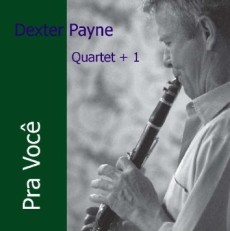
Daily Dose Of Jazz…
Charles Lacy Tyler was born on July 20, 1941 in Cadiz, Kentucky and spent his childhood years in Indianapolis, Indiana. He played piano as a child and clarinet at 7, before switching to alto in his early teens, and finally settled with the baritone saxophone. During the summers, he visited Chicago, New York City and Cleveland, Ohio that he met the young tenor saxophonist Albert Ayler at age 14.
After a stint in the army from 1957–1959, Tyler relocated to Cleveland in 1960 and began playing with Ayler, commuting between New York and Cleveland. During that period he got to jam with Ornette Coleman and Sunny Murray. In 1965 he recorded with Ayler’s group Bells and Spirits Rejoice.
Charles recorded his first album as leader in 1966 for ESP-Disk, returned to Indianapolis to study with David Baker at Indiana University between 1967 and 1968, then recorded a second album for ESP titled Eastern Man Alone. In 1968 he transferred to the University of California, Berkeley to study and teach. In Los Angeles, he worked with Arthur Blythe, Buddy Bradford and David Murray before heading back to New York in 1974, to lead his own freebop groups with Blythe, trumpeter Earl Cross, drummer Steve Reid and others.
During this period he recorded on his Akba label the album Voyage from Jericho. By 1975, Tyler enrolled at Columbia University and made an extensive tour of Scandinavia releasing his second Akba album Live in Europe. The next year he performed the piece Saga of the Outlaws at Sam Rivers’ Studio Rivbea that was released two years later. He would go on to perform sideman or co-leader duties with Steve Reid, Cecil Taylor, Hal Russell, Wilbur Morris and Billy Bang.
In 1982, during a European tour with the Sun Ra Orchestra, he relocated to Denmark and three years later moved to France, recording with other expatriates like Khan Jamal in Copenhagen and Steve Lacy in Paris. Free jazz alto and baritone saxophonist CharlesTyler died in Toulon, France of heart failure on June 27, 1992.
More Posts: saxophone

Daily Dose Of Jazz…
Akua Dixon was born July 14th and raised in New York City, growing up in a family suffused with music, starting with her early experience singing in the Baptist church. She began playing cello in the fourth grade and soon was playing with her sister, the late violinist Gayle Dixon. By junior high they were playing little gigs and in high school she started freelancing.
After graduating from the High School of the Performing Arts, Dixon studied at the Manhattan School of Music and post graduation she joined the pit band at the Apollo Theater as an essential proving ground. There she backed such artists as Rev. James Cleveland, Barry White, James Brown and Dionne Warwick, but after Sammy Davis Jr. insisted the Westbury Music Fair include Black musicians in the orchestra she broke into Broadway pit bands and worked shows the likes of Charles Aznavour, Liza Minnelli (Liza with a Z), La Cage Aux Folles, Cats, Doonesbury, Dream Girls, and many others.
Finding a home with the Symphony of the New World, she experienced the Ellingtonian epiphany that led her to her study and immersion into jazz, spirituals and the secret s of improvising. In the Seventies she joined Noel Pointer’s String Reunion, served as director of new music and supplied the group with a steady stream of compositions and arrangements. At the same time, Akua launched her own string quartet, Quartette Indigo, which made its big league debut at the Village Gate with her sister Gayle Dixon, Maxine Roach, and John Blake Jr.
Throughout her career Dixon has worked and collaborated with Archie Shepp, Rahsaan Roland Kirk, Woody Shaw, Jimmy Heath, Frank Foster, Leroy Jenkins, Charles Burnham, Abdul Wadud, Archie Shepp, Don Cherry, Buster Williams, Carmen McRae, Dizzy Gillespie, Abbey Lincoln, Tom Harrell, and her former husband Steve Turre, She was a founding member of the Max Roach Double Quartet where she learned to phrase bebop. She’s conducted for the Alvin Ailey American Dance Theatre, lectured at the Smithsonian Institution, and composed an opera commissioned by the Rockefeller Foundation, The Opera of Marie Laveau that premiered at Henry Street New Federal Theatre in New York City.
As an educator she has spent much of her time teaching at various institutions and conducting dozens of performances through the Carnegie Hall Neighborhood Concert Series. Cellist, arranger, composer, vocalist and educator Akua Dixon stays busy composing new music for her string group, the Moving On Quartet and other ensembles in addition to performing and recording.
More Posts: cello

Daily Dose Of Jazz…
Reedman Dexter Payne was born on July 5, 1951 in Denver, Colorado. The clarinet was his first instrument and went on to master the alto and baritone saxophones adding them to his arsenal. His early influences were Artie Shaw, Buddy DeFranco, Benny Goodman, Stan Getz, Zoot Sims, Gerry Mulligan,Benny Carter, Johnny Hodges and Lester Young.
A very lyrical and melodic player, Dexter plays swing, bop, cool jazz, and Brazilian jazz as well as other forms of music including Latin. In 2000 he played with Brazilian musician Thiago de Mello, recorded the album Inspiration in 2003, with Brazilian guitarist Antonio Mello,
He followed with his sophomore release in 2005 release Another Feeling with producer Arnaldo De Souteiro on his Jazz Station label. He recorded again in 3006 and 2007 which de Mello produced and released Our Time to Remember. Clarinetist and saxophonist Dexter Payne continues to perform, record and tour.

Daily Dose Of Jazz…
Tony Miceli was born July 1, 1960 in Cincinnati, Ohio and grew up in Willingboro, New Jersey. He starting playing classical guitar at an early age and then took up the drums, piano and trumpet. He played drums in a high school band called Minas Tirith. Graduating from high school he took drum lessons and secured admission into the University of the Arts. It was there that he was drawn to the vibraphone. Upon completion of his matriculation 1982, through the decade and into the Nineties he toured through Germany with a percussion group called Mallet Madness.
In the late 1990s Miceli created the Philadelphia based group Monkadelphia, a group “dedicated to performing the music of Thelonious Monk. Regularly performing in the Netherlands with the band Thelonious 4, he also plays in an Irish tribute band to the Modern Jazz Quartet.
In addition to performing Tony is an educator and by 2000 he was teaching at Temple University, the University of the Arts, teaching master classes in jazz improvisation and conducting numerous workshops throughout North America and Europe.
Over the course of a career that includes composing, recording and teaching vibraphonist Tony Miceli has performed with Chris Farr, Tom Lawton, Micah Jones, Gina rocjJim Miller, David Friedman, Joe Magnarelli, Dave Liebman, Elio Villafranco, Steve Slagele, Jimmy Bruno, Dave Stryker, Peter Bernstein, Gerald Veasley and Joanna Pascale. He continues to perform a wide variety of musical genres on both the club and festival circuits.
More Posts: vibraphone

Daily Dose Of jazz…
Tata Güines was born Federico Arístides Soto Alejo on June 30, 1930 in, the poor town of Güines east of La Habana in the province of Havana in Cuba. He made his first drums out of milk cartons and sausages. But, by the 1950s he was working with such top Cuban musicians as Arsenio Rodriguez, Luciano “Chano” Pozo, Bebo Valdes, and Israel “Chachao” Lopez.
In the late 1950s he formed a band with the pianist Frank Emilio Flynn called Quinteto Instrumental de Musica Moderna, which was later changed to Los Amigos. Güines moved to New York City in 1957 and quickly immersed himself in the jazz scene paying with Dizzy Gillespie, Maynard Ferguson and Miles Davis at Birdland. As a percussionist, he performed with Josephine Baker and Frank Sinatra.
Tata returned to Cuba in 1959 after Fidel Castro came to power in the Cuban Revolution which he helped fund by contributions from his earnings as a musician. For a while instrumentalists fell out of favor with the Cuban public and his popularity diminished. However, by 1979 his star began to shine once again with his work in the Estrellas de Areito sessions, recording for Egrem, the Cuban state record company, which revived the old descarga style.
By the 1990s, he was considered an old master and frequently toured. He recorded with the young conguero Miguel Diaz on the 1995 Pasaporte that garnered them the Egrem Album of the Year award, the equivalent of a Grammy in Cuba. He has played with pianist Bebo Valdes and singer Diego El Cigala Lágrimas Negras (Black Tears) that won a Latin Grammy, and has performed with saxophonist Jane Bunnett.
Conguero and tumbadora player, percussionist and composer Tata Güines, who during his career spanning six decades was known as the “King of the Congas” and who was important in the first generation of Afro-Cuban jazz, passed away on February 4, 2008 in his hometown of Havana.
More Posts: conga,percussion


